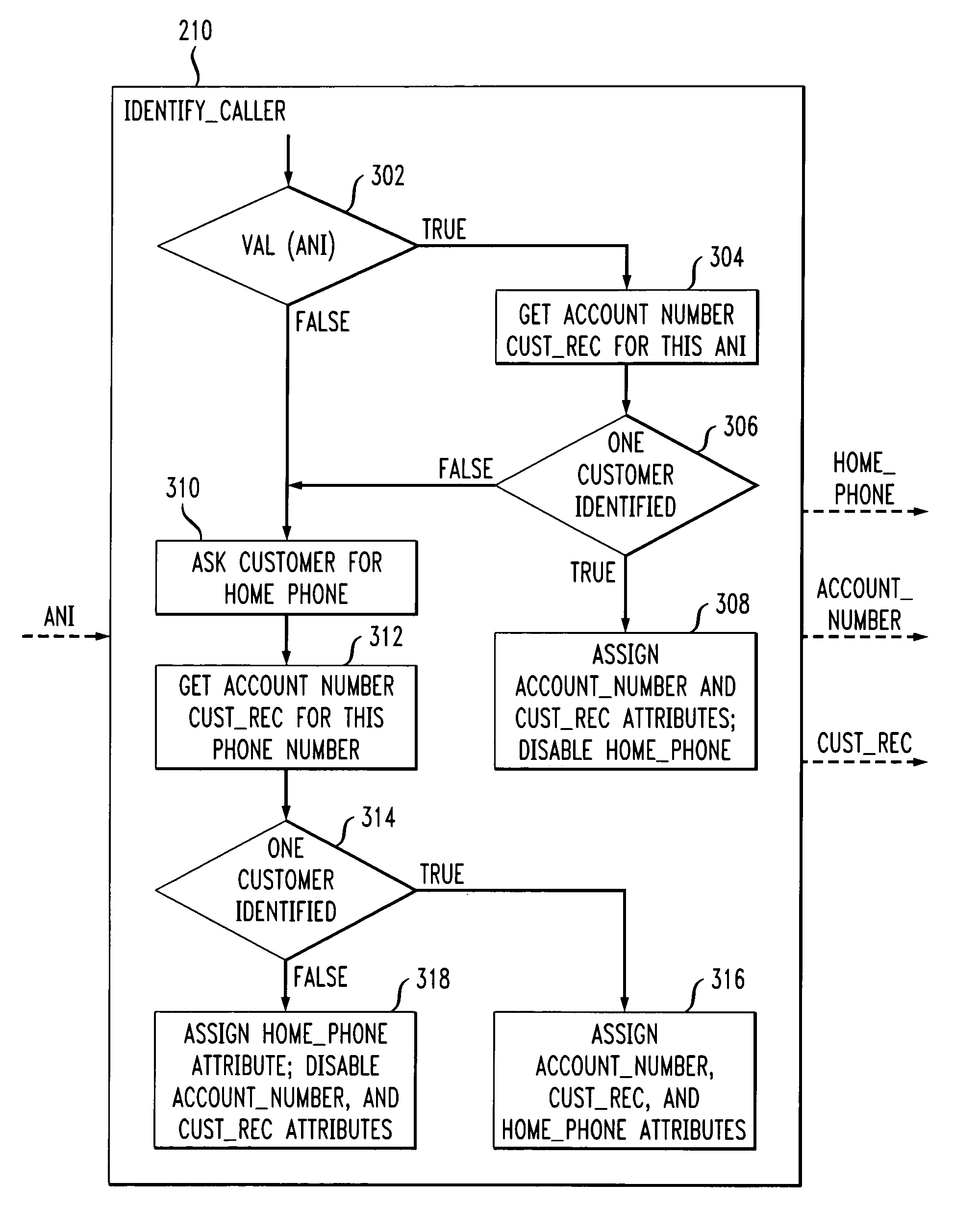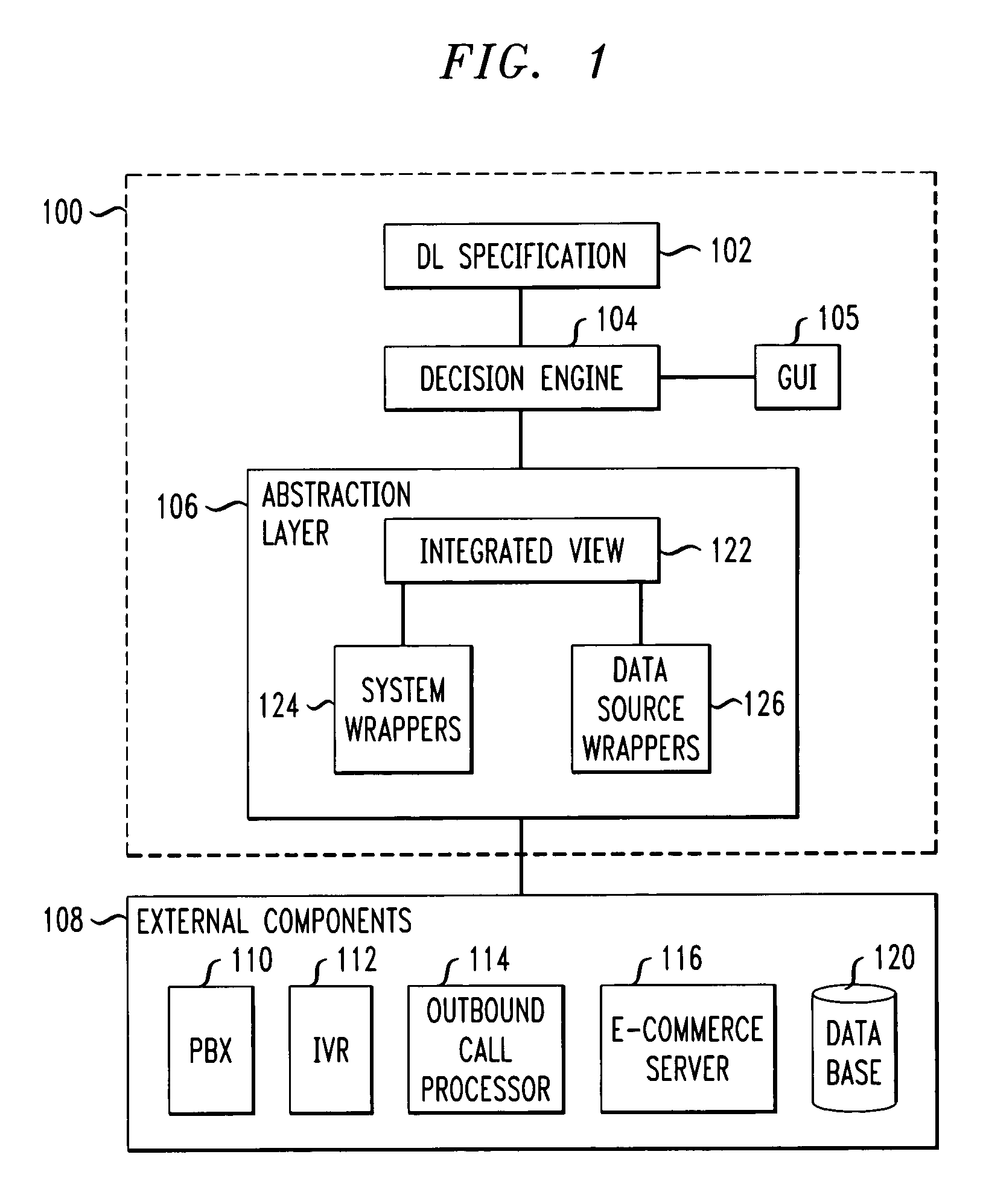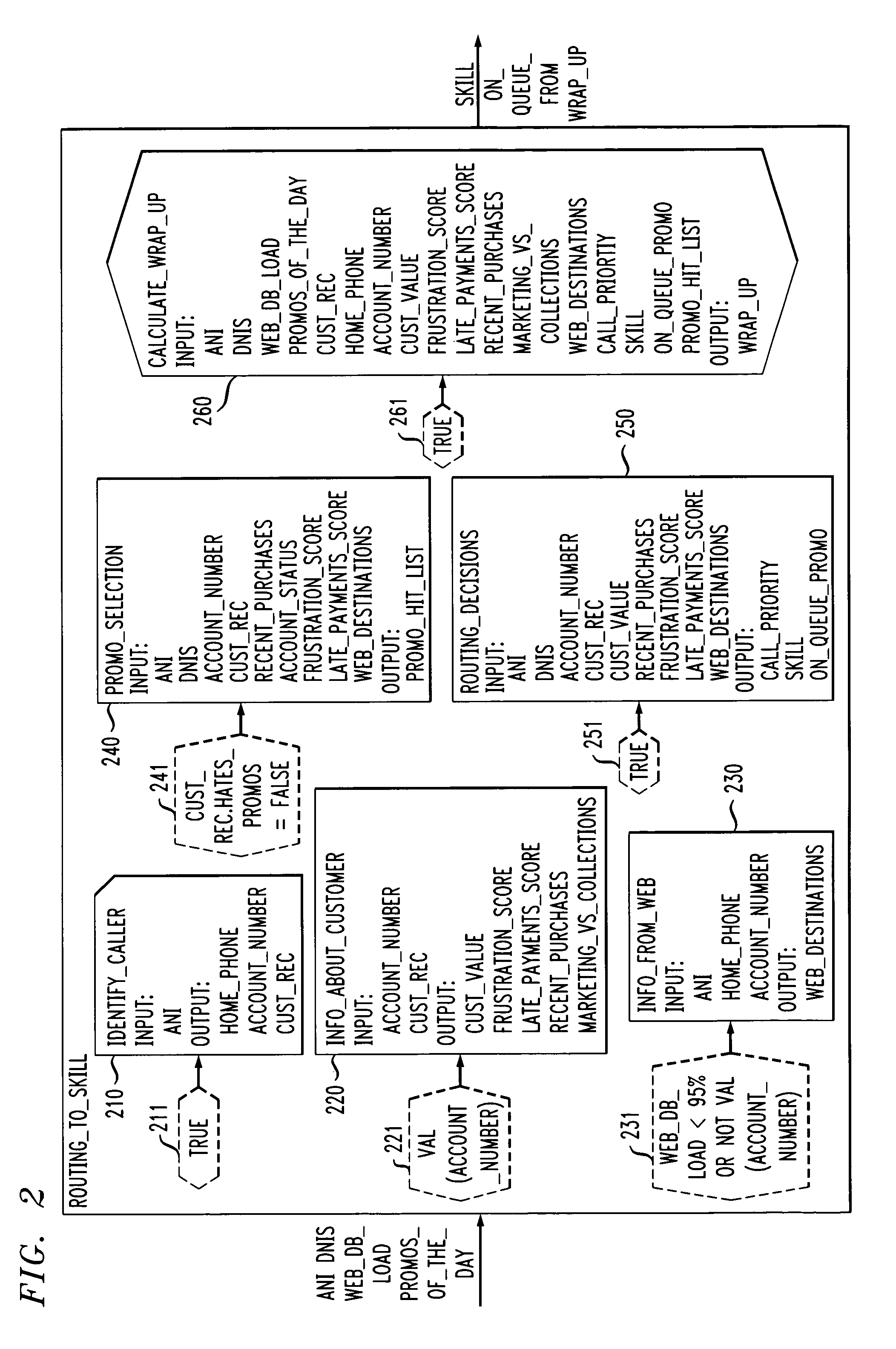Eager evaluation of tasks in a workflow system
a workflow system and task technology, applied in the field of task scheduling in computer systems, can solve the problems of high overhead and effect tasks, and achieve the effects of low processing overhead, high overhead, and cost of unnecessary processing of non-side-effect tasks
- Summary
- Abstract
- Description
- Claims
- Application Information
AI Technical Summary
Benefits of technology
Problems solved by technology
Method used
Image
Examples
first embodiment
[0225]the decision engine 104 requires that a topological sort of the modules be created. In order to describe the topological sort, first the data and enabling flow diagram shown in FIG. 26 will be described. This diagram illustrates the data flow dependencies and the enabling flow dependencies of the workflow described above. Each of the modules (ovals) and enabling conditions (hexagons) are represented as nodes with solid line data flow edges representing data flow dependencies and broken line enabling flow edges representing enabling flow dependencies. Node 2601 represents the source attributes. A data flow edge from a module M to a module M′ indicates that an output attribute of M is used as an input attribute of M′. An enabling flow edge from a module M to the enabling condition of a module M′ indicates that the enabling condition of M′ uses an output attribute from M. Also, there is an enabling flow edge from each enabling condition to the module that it qualifies. For exampl...
case 3
[0395, shown in section 3536 implements propagation rule (1) and operates as follows. If an edge (n,p) is hidden, then the predicate node n was computed to be false, in which case it is no longer relevant whether attribute A is true-necessary for n. Thus, if attribute A is not already true-necessary for n (i.e. T_N[p][A]≠0) then the value of T_N[p] [A] is decremented, which reduces the number of relative predecessors for which A needs to be true-necessary. Case 4, shown in section 3538 implements propagation rule (4) and operates as follows. If an edge (n,p) is hidden, then the predicate node n was computed to be false, in which case it is no longer relevant whether attribute A is false-necessary for n. Thus, if attribute A is not already false-necessary for n (i.e. F_N[p][A]≠0) then the value of F_N[p][A] is decremented, which reduces the number of relative predecessors for which A needs to be false-necessary.
[0396]The propagation step 3540 calls the new_propagate routine, which is...
PUM
 Login to View More
Login to View More Abstract
Description
Claims
Application Information
 Login to View More
Login to View More - R&D
- Intellectual Property
- Life Sciences
- Materials
- Tech Scout
- Unparalleled Data Quality
- Higher Quality Content
- 60% Fewer Hallucinations
Browse by: Latest US Patents, China's latest patents, Technical Efficacy Thesaurus, Application Domain, Technology Topic, Popular Technical Reports.
© 2025 PatSnap. All rights reserved.Legal|Privacy policy|Modern Slavery Act Transparency Statement|Sitemap|About US| Contact US: help@patsnap.com



